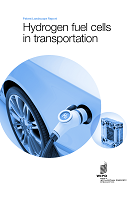

May 18, 2022
In the global effort to meet our climate targets and lower carbon emissions, carbon-free hydrogen has been missing in action. Fortunately, governments and businesses are increasingly looking to clean the production of H2 and promote it as a climate-change champion.

Hydrogen is a critical component in petroleum refining, glass purification, semiconductor manufacturing, rocket fuel, the steel industry, many pharmaceutical products, and fertilizer production. Globally, about 55% of the world’s hydrogen goes towards ammonia (NH3) production, which is critical for the agroindustry. Refineries take a 25% share, another 10% goes to methanol production, and the remaining 10% is distributed across other operations.
Over 90% of hydrogen production comes from fossil fuels and the end products of many hydrogen applications are heavy carbon dioxide emitters. That may change in the future, as there is strong global interest in hydrogen decarbonization and a push to use renewable green energy on both ends of the production line, highlighting hydrogen’s promises and challenges as a renewable resource.
Hydrogen does not exist in its free form and must be separated from other elements. The three primary sources of hydrogen production are natural gas, oil, and coal. The greenest options, resulting in zero CO2 emissions, are currently the most expensive.
Hydrogen’s environmental impact and energy efficiency depend on its production chain. Innovative technologies are at the center of the global race toward a large-scale transition to green, or renewable, hydrogen.
By generating hydrogen from low or zero-carbon renewable energy sources such as electrolysis, biogas, solar, and wind farms, investors hope to encourage the uptake of “clean” hydrogen, leading to a greener global economy.
According to the International Energy Agency, the number of low-carbon hydrogen projects is growing. Many governments are adopting hydrogen strategies. For instance, in July 2020, the European Commission published "A hydrogen strategy for a climate-neutral Europe" to boost clean hydrogen production towards the goal of climate neutral by 2050. China, the current global leader in the clean hydrogen economy, outlined its new H2 policies and targets in the “Medium and Long-Term Plan for the Development of Hydrogen Energy Industry (2021-2035)”.
The below color code divides and explains hydrogen’s energy sources:
Other countries such as Australia, India, and the United States, the world’s second-biggest producer and consumer of hydrogen after China, have also disclosed their visions for a clean, innovative, safe, and affordable hydrogen economy.
Two of the central promises of H2 are that it is an efficient and safe storage of renewable electricity and an excellent alternative to batteries. As a fuel, hydrogen has the highest gravimetric energy density, meaning that one kilogram of hydrogen contains an enormous amount of energy, making it a lightweight energy carrier. This results in, for example, fuel cell electric vehicles (FCEVs) traveling farther and longer compared to heavier, battery-powered vehicles.
FCEVs combine hydrogen stored in a tank with oxygen from the air to produce electricity to power the car, with water vapor as the by-product. They are already available on the market, and the number of H2 fueling stations is growing. Gaoming District, Foshan City, China, is currently operating a hydrogen-powered tram. The shipping industry is evaluating hydrogen in the form of ammonia as a future sustainable fuel, and the first "ammonia-ready" vessel in the world is already in operation as of January 2022. Aviation designers are also working on hydrogen-powered engines that enable sustainable and economical travel at high supersonic speeds.
Hydrogen has other potentially "net zero" applications. For instance, hydrogen may replace carbon in the ironmaking process and eliminate emissions in metallurgy. Using hydrogen instead of coal will emit water steam instead of CO2. Nevertheless, the “fuel of the future” has some challenges.
The production of H2 from carbon-intensive sources is already on an industrial scale and harnessing low-carbon suppliers require an almost complete overhaul of existing systems.
The biggest hurdle, however, may be cost. The European Commission estimates the amount of investment needed to scale green hydrogen to be between US$186 billion to US$487 billion dollars by 2050. Only to supply up to 15% of the continent’s total energy.
Safety is another concern, as hydrogen is highly flammable and potentially explosive. The transportation of hydrogen for use at refueling stations poses additional safety risks.
As with any new technology, renewable hydrogen costs should decrease if the market grows and achieves economies of scale in manufacturing and infrastructure. Proponents of hydrogen encourage the mass production of electrolyzers, using renewable energy to split water into hydrogen and oxygen. Other improvements in existing green technologies benefit from Green Hydrogen Guarantees of Origin (GO), promoting sustainable producers of non-fossil fuel-based H2.
Delivering on the promises of an abundance of carbon-neutral hydrogen energy for the future will require feasible solutions covering the entire value chain: production, storage, transportation, and utilization. The WIPO GREEN database contains several innovative technologies enabling the safe and efficient use of hydrogen. Examples include Airbus's hydrogen tank design for aircraft to technology in efficient fuel cells.
As the innovation race heats up, research and development, international policy cooperation, scalability, and affordability will be vital in making systemic changes to accelerate the growth of green hydrogen and away from fossil fuels.
While not quite yet the hero in addressing climate change, hydrogen has the potential to be a unique energy carrier using low or zero-carbon renewable energy sources due to its plethora of applications across sectors. H2 may well be on its way to finally achieving eco-friendly credentials. This space is getting a lot of attention and will be interesting to watch in the future.

WIPO Director General Daren Tang delivered opening remarks at the "Hydrogen Technologies in Transport - Ready for the Future" conference co-hosted by the Government of Slovakia and WIPO in Bratislava, Slovakia, May 17-18, 2022.
Mr. Tang unveiled the "Patent Landscape Report: Hydrogen fuel cells in transportation", a WIPO publication highlighting key findings and insights on hydrogen’s role in moving the transportation sector toward a Net Zero pathway.